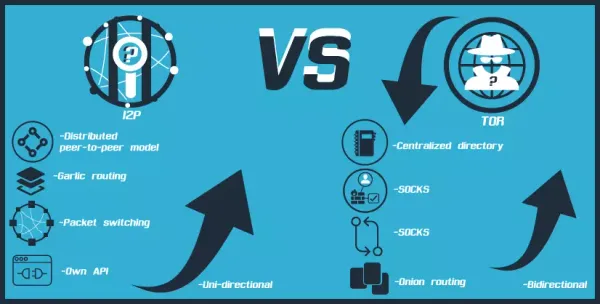Monero's View Key Trust Problem: When Privacy Requires Perfect Operational Security
Monero view keys enable transaction detection without spending authority, but the operational security requirements around view key management expose users to surveillance risks that the privacy coin community rarely discusses honestly.

Monero view keys enable transaction detection without spending authority, but the operational security requirements around view key management expose users to surveillance risks that the privacy coin community rarely discusses honestly. View key vulnerabilities emerge through operational choices and architectural design decisions.
What View Keys Actually Reveal
View keys detect incoming transactions through shared secret computation with transaction ephemeral keys. Private view keys identify outputs belonging to specific addresses while maintaining privacy against external blockchain observers. RingCT amounts are decryptable by the holder of the private view key using the tx public key; no spend key is required. Spend keys control actual fund transfers through a separate cryptographic mechanism.
This separation creates a critical limitation: view keys reveal incoming transfers but cannot determine outgoing spends or current spendable balance. Correct balances in a view-only wallet require importing key images signed with the spend key. Key image computation requires the private spend key, not the view key. Attackers with view key access cannot calculate key images or determine which outputs were spent.
View key exposure reveals past and future incoming transfers for that specific wallet. It does not reveal outgoing transactions, cannot predict future spending behavior, or provide comprehensive transaction history reconstruction across the broader Monero network.
The Trust Architecture Problem
Only the wallet with the private view key can detect its outputs; external observers cannot link stealth addresses together without access to the corresponding private view key. The cryptographic design works as intended.
The vulnerability emerges through trust relationships with third-party infrastructure. Lightweight wallets share your private view key with a remote server so it can scan on your behalf. Server operators gain access to complete incoming transaction history and amounts for uploaded wallets, creating centralized surveillance points through architectural design decisions. MyMonero states your spend key never leaves the device, but the view key exposure provides comprehensive financial surveillance capability.
Public remote nodes can see your IP and sync heights; they cannot infer which outputs are yours without extra info. The surveillance risk comes from connection pattern analysis and network correlation.
Network Analysis Limitations and Realities
Network observers can link IP addresses to "uses Monero" through remote node connections and timing analysis. Traffic correlation enables identification of Monero users but cannot determine specific transaction ownership or amounts. Dandelion++ reduces transaction-origin leakage but does not protect against your ISP/VPN or the first hop; wrap your node/wallet over Tor for that. Dandelion++ was deployed in April 2020.
Connecting to .onion RPC endpoints involves no exit nodes; onion service traffic never leaves Tor. Hidden service connections eliminate exit node exposure entirely. Tor integration provides effective anonymization when properly configured for hidden service usage.
The distinction matters: network analysis can identify Monero usage patterns but cannot break on-chain privacy guarantees without additional compromises like view key exposure or off-chain data correlation.
Threat Assessment Reality Check
Chainalysis and others hold government contracts; public materials show heuristics and off-chain correlation, not "view-key scanning-pattern" deanonymization. The attack vectors focus on exchange data, IP correlation, and user operational security failures.
Light Wallet Architecture Surveillance
Light wallet services create the most significant view key privacy risk through architectural design. Users upload view keys to enable remote wallet functionality, providing server operators with complete incoming transaction visibility. This design trades privacy for convenience through centralized trust relationships.

MyMonero and similar services process view key uploads to provide balance information and transaction history. Server operators can log, analyze, and potentially share this financial data with government agencies or commercial partners. Users sacrifice privacy through service architecture.
The surveillance infrastructure exists through business model design: light wallet services require comprehensive financial data access to function, creating natural surveillance capabilities that government agencies can exploit through legal process or commercial partnerships.
Operational Security Requirements
Self-hosted full nodes eliminate remote node surveillance but require technical expertise, bandwidth, and storage resources. Full node operation provides maximum privacy at the cost of operational complexity and resource requirements that exceed most users' capabilities.
View key compartmentalization through separate wallets for different use cases limits exposure scope. Multiple wallet instances reduce comprehensive transaction history exposure but increase operational complexity and require disciplined usage pattern separation.
Maximum complexity
Requires discipline
Advanced procedures
Private view key protection requires secure storage, access control, and distribution procedures that minimize exposure risk. Most users lack the operational security knowledge to implement effective view key protection against sophisticated adversaries or even basic compromise scenarios.
Defense Posture Assessment
Current protection strategies work against specific threat models but fail when users make operational security mistakes. Tor usage with .onion endpoints provides effective network anonymization. Self-hosted nodes eliminate third-party surveillance. Avoiding light wallet services prevents view key exposure to commercial operators.
Zero surveillance
Complete anonymity
Convenience choices
Complexity barriers
The fundamental challenge remains user education and operational complexity. Monero's privacy depends on users understanding threat models, implementing appropriate countermeasures, and maintaining operational security practices consistently over time.
Most users default to convenience over privacy through light wallet usage and remote node reliance. The privacy guarantees depend on operational choices that compromise security for usability, creating gaps between promised privacy and delivered protection under real-world usage conditions.
View key operations alone do not compromise anonymity when properly managed. The surveillance risks emerge through trust relationships with third-party services and operational security failures. Users requiring maximum privacy must maintain private view keys and avoid architectural compromises that introduce surveillance capabilities through service design.




